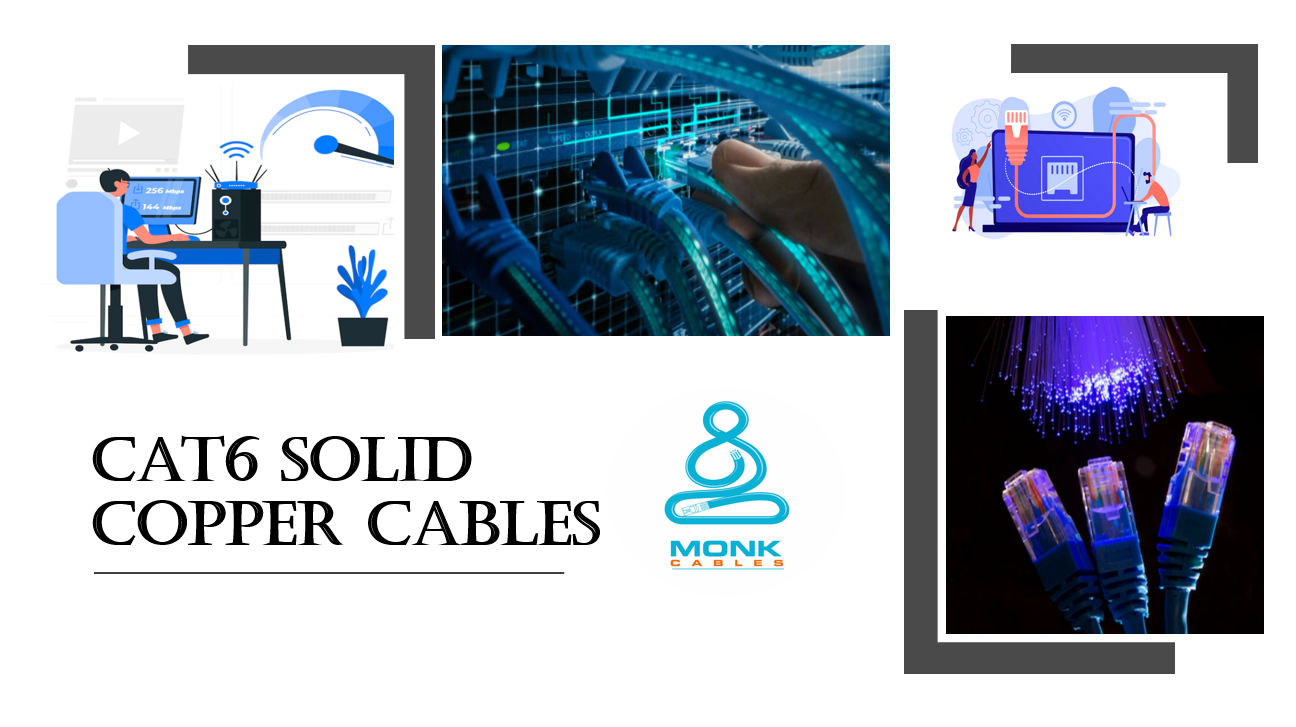
Cat6 Solid Copper vs. Cat6 Riser: Which One Is Right for You?

Are you planning to upgrade your network cabling system? If yes, then you might have heard about Cat6 cables. They are the latest standard in the cabling world and provide faster data transfer speeds and improved performance. But, when it comes to choosing the right type of Cat6 cable you might be confused between Cat6 solid copper and Cat6 riser.
Introduction
Cat6 cables are an improvement over Cat5e cables and offer faster data transfer speeds and higher bandwidth. They are ideal for large data transfers, streaming, and gaming. However, when it comes to choosing the right type of Cat6 cable, you might be confused between Cat6 solid copper and Cat6 riser. Both cables are designed for different environments and applications. In the following sections, we will compare both types of cables and help you choose the right one.
What is Cat6 Solid Copper?
Cat6 solid copper cable is a type of Cat6 cable that uses solid copper conductors. It is designed for in-wall installations and provides excellent performance and durability. It is ideal for long cable runs and is recommended for commercial and residential installations. It is available in different colors and lengths and can be used for different applications.
What is Cat6 Riser?
Cat6 riser is a type of Cat6 cable that is designed for vertical installations. It is ideal for use in between floors, from floor to ceiling, or in riser shafts. It is made from flame-retardant materials and provides improved performance and durability. It is available in different colors and lengths and can be used for different applications.
Construction and Design
Cat6 Solid Copper
Cat6 solid copper cables are made from four twisted pairs of solid copper conductors. The conductors are insulated with high-density polyethylene (HDPE) and are tightly twisted to reduce crosstalk and interference. The cable is then wrapped in a PVC jacket for protection. It is available in different colors and lengths and can be used for different applications.
Cat6 Riser
Cat6 riser cables are made from four twisted pairs of solid or stranded copper conductors. The conductors are insulated with HDPE and are tightly twisted to reduce crosstalk and interference. The cable is then wrapped in a flame-retardant PVC jacket for protection. It is available in different colors and lengths and can be used for different applications.
Performance
Speed
Both Cat6 solid copper and Cat6 riser cables provide similar data transfer speeds of up to 10 Gbps. They are ideal for large data transfers, streaming, and gaming. However, the actual speed depends on the length of the cable and the network devices used.
Bandwidth
Both Cat6 solid copper and Cat6 riser cables provide similar bandwidths of up to 250 MHz. This means they can handle more data traffic and provide better performance compared to Cat5e cables.
Cat6 Solid Copper
Cat6 solid copper cables are more durable than Cat6 riser cables. They are designed for in-wall installations and can withstand more physical stress. They are less prone to breakage and damage and are ideal for long cable runs.
Cat6 Riser
Cat6 riser cables are also durable but are designed for vertical installations. They are made from flame-retardant materials and can withstand high temperatures and fire. They are ideal for use in buildings and structures with multiple floors or levels.
Compatibility
Both Cat6 solid copper and Cat6 riser cables are compatible with a wide range of devices and network equipment. They are backward compatible with Cat5e and Cat5 cables and can be used with routers, switches, modems, and other network devices.
Cost
The cost of Cat6 solid copper and Cat6 riser cables varies depending on the length, quality, and manufacturer. However, generally, Cat6 solid copper cables are more expensive than Cat6 riser cables due to their superior performance and durability.
Conclusion
In conclusion, choosing the right type of Cat6 cable depends on your specific needs and requirements. If you are planning to install the cable inside the walls, go for Cat6 solid copper. On the other hand, if you need a cable for vertical installations, go for Cat6 riser. Both cables offer excellent performance and durability and can handle large data transfers, streaming, and gaming. However, it is important to consider factors such as compatibility, cost, and performance before making a decision.
Appreciate the creator